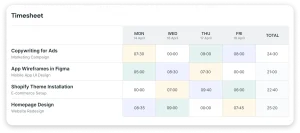Building Brand Communities Through Trade Show Networking

The lights are bright. The floor is buzzing. You’re surrounded by a sea of booths, each one vying for a moment of attention. In this environment, it’s easy to see trade shows as a simple numbers game: collect as many leads as possible and call it a win.
But what if you’re missing the real goldmine? The truth is, trade shows are one of the last great frontiers for building a genuine, pulsating brand community. It’s not just about handing out swag and scanning badges. It’s about turning a transient crowd into a loyal tribe.
Why Community Beats a Lead List Every Time
Sure, a long lead list feels good. It’s a tangible result. But a list is passive. A community is active. A community doesn’t just buy from you; they advocate for you. They defend you. They give you priceless, honest feedback. They become an extension of your marketing team, honestly.
Think of it this way: a lead is a single fish you’ve caught. A community is the entire school, swimming with you, guiding others to you, and thriving in the ecosystem you’ve created. Trade show networking, when done right, is the catalyst for that.
The Pre-Show Huddle: Laying the Groundwork
You can’t just show up and hope a community magically forms. The work starts weeks, even months, before the convention center doors swing open. This is where your pre-show community engagement strategy kicks in.
Spark the Conversation Online
Use your social channels, email list, and even a dedicated event hashtag to build anticipation. Don’t just announce you’ll be there. Ask questions.
- “What’s the biggest challenge you’re hoping to solve at [Trade Show Name]?”
- “Who else are you excited to see on the floor?”
- “We’re planning something special at our booth—any guesses what it might be?”
This does two things. One, it generates buzz. Two, it gives you a list of people to seek out. You’re not going in cold; you’re arriving to continue conversations you’ve already started.
Create an Exclusive “Inner Circle”
Identify your top customers or most engaged social media followers and invite them to an exclusive pre-show meetup or a VIP hour at your booth. Make them feel like insiders. This sense of belonging is the bedrock of community.
The Main Event: Facilitating Connection, Not Just Collection
Okay, you’re here. The show is on. This is where the magic happens—or doesn’t. Ditch the hard sell. Your goal is to be a connector, a host, a valuable resource.
Design Your Booth for Interaction
Is your booth layout designed for a monologue or a dialogue? A stark counter with staff lined up behind it creates a barrier. Comfortable seating, an open layout, and interactive demos encourage people to linger, talk, and—crucially—talk to each other.
That’s the secret sauce. When you see two attendees hitting it off, facilitate that. Introduce them. “Sarah, this is Mark. He was just telling me he faces the same inventory issue you were dealing with.” You’ve just created a micro-connection within your community.
Host a Session That Adds Real Value
Instead of just another product demo, host a mini-workshop or a roundtable discussion on a pressing industry pain point. Frame yourself as a thought leader, sure, but more importantly, as a facilitator of peer-to-peer learning. This transforms your brand from a vendor into a hub for shared knowledge.
Here’s a quick comparison of the old way versus the community-building way:
| Traditional Approach | Community-Focused Approach |
| Staff stays behind the booth counter | Staff circulates, mingles, and introduces attendees |
| Goal: Scan as many badges as possible | Goal: Have 10 meaningful conversations |
| Conversation: “What do you do?” | Conversation: “What’s your biggest hurdle right now?” |
| Giveaway: Enter to win a solo prize | Activity: Collaborative challenge for a group reward |
The Follow-Through: Keeping the Pulse Beating
And here’s where most companies drop the ball. The show ends, the leads get dumped into a CRM, and a generic “It was great to see you!” email goes out. Cue the sound of a deflating balloon.
The community you started to build on the floor will evaporate if you don’t nurture it. Your post-trade show engagement strategy is everything.
Personalize, Personalize, Personalize
Reference your specific conversation in your follow-up. “Hey John, great chatting with you about 3D printing prototypes at the Anaheim show. You mentioned you were also going to the keynote on sustainable materials—what did you think?” This shows you were actually listening.
Create a Dedicated Space
Launch a private LinkedIn group or a dedicated forum and invite everyone you connected with. Call it “[Your Brand] Insiders: [Trade Show Name] 2024.” Immediately post photos from the event, recap key takeaways from your session, and encourage members to share their own. You’re giving the community a home.
Keep the Value Flowing
Share a piece of content that’s only for this group—a whitepaper, an exclusive interview with an industry expert, an advanced tutorial. The message is clear: “You’re part of something special, and we’re invested in your success.”
A Lasting Impression
Building a brand community isn’t a tactic; it’s a mindset. It’s a shift from seeing trade shows as a cost center for lead generation to viewing them as an investment in human connection. The ROI isn’t just in a quarterly sales report. It’s in the steady hum of a dedicated group that grows stronger long after the exhibit hall lights have dimmed.
The most powerful brands aren’t just bought; they’re beloved. And that kind of loyalty starts with a handshake, a conversation, and the deliberate, patient work of building a home for your people.








